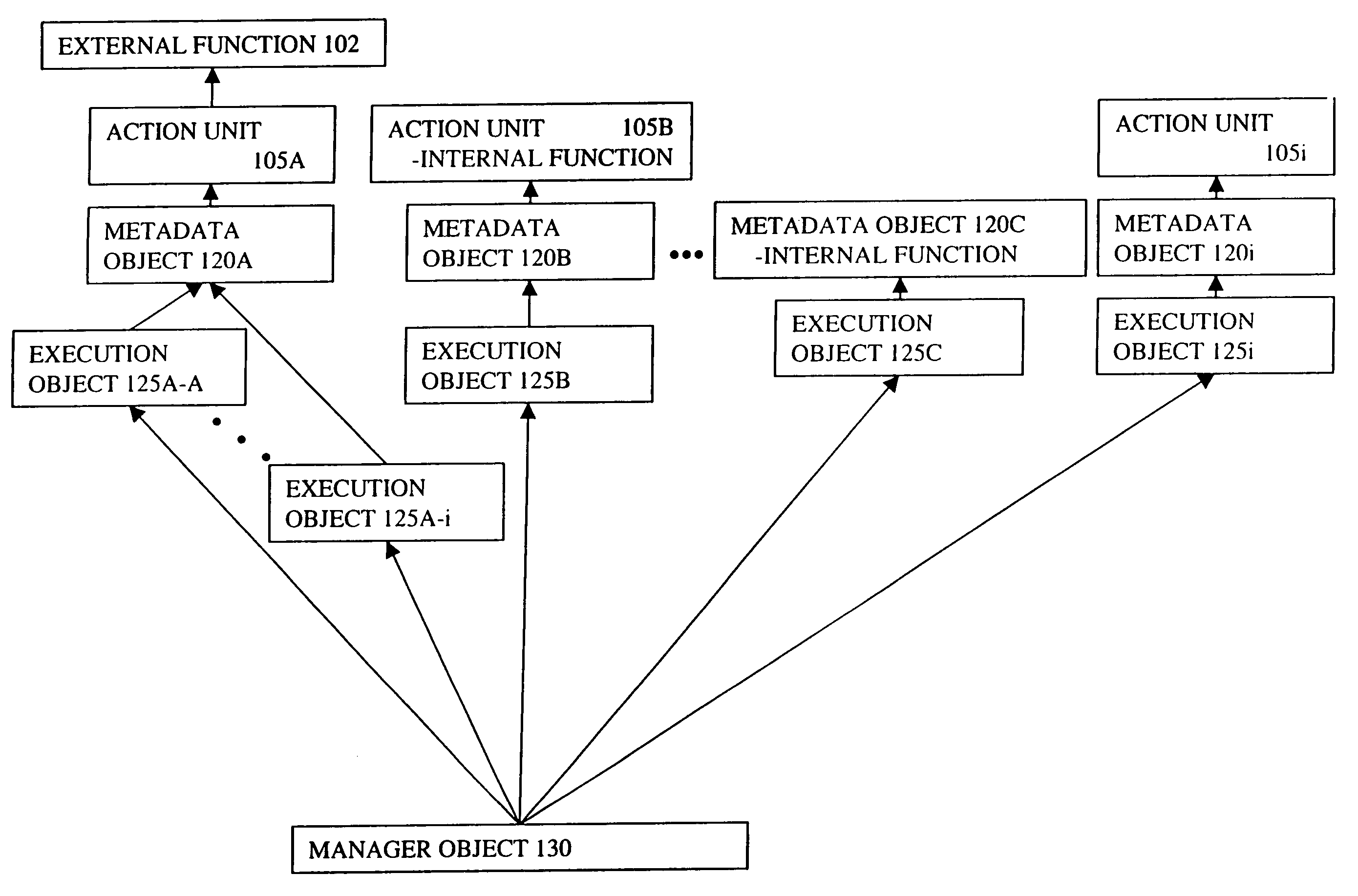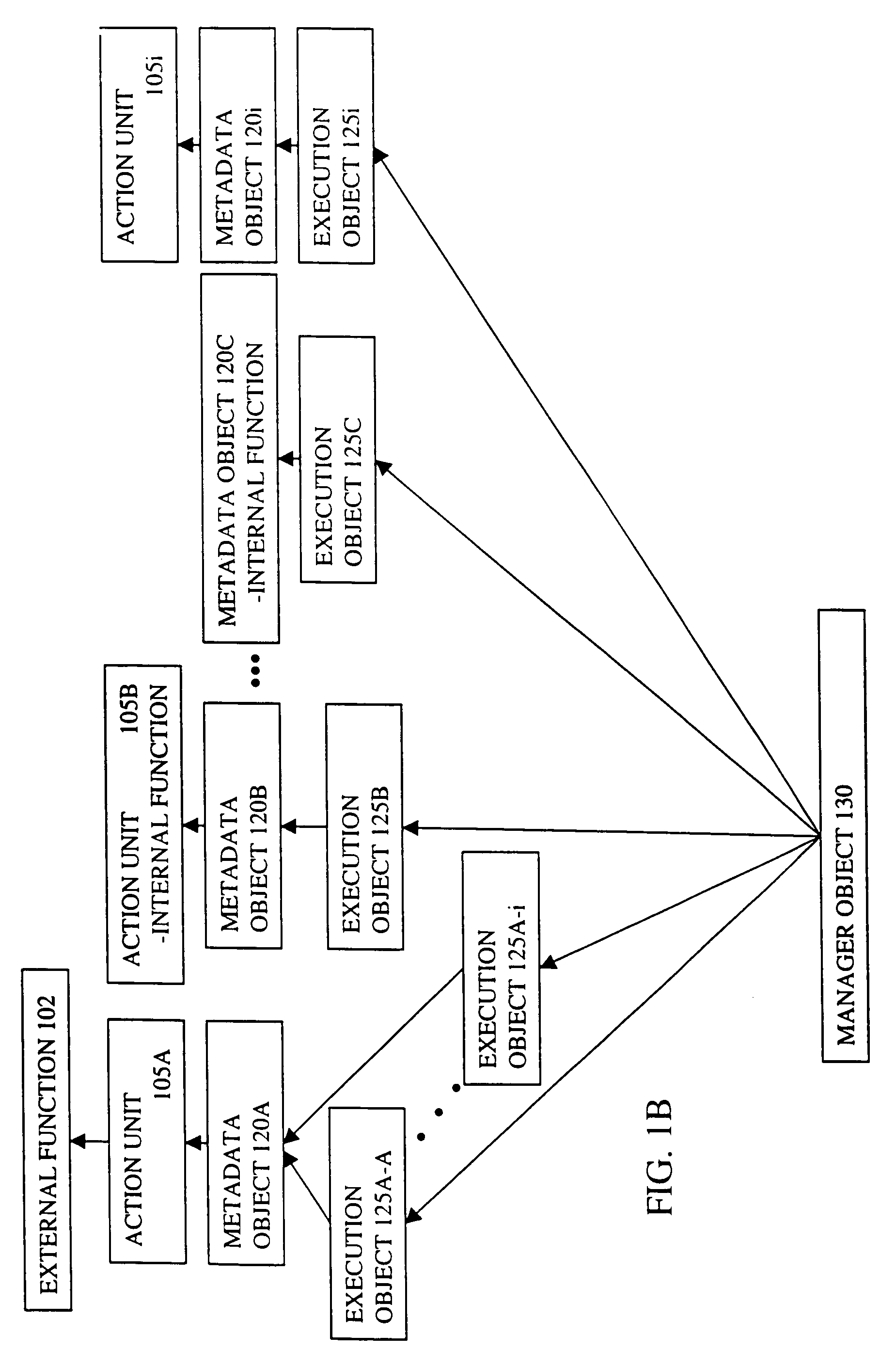Method and apparatus for managing functions
a function and function technology, applied in the field of computer systems, can solve the problems of unable to support “call on need” type of functions, type of application development does not lend itself to maintainable components, and approach has several limitations
- Summary
- Abstract
- Description
- Claims
- Application Information
AI Technical Summary
Benefits of technology
Problems solved by technology
Method used
Image
Examples
Embodiment Construction
[0041]In the following description, numerous specific details are set forth to provide a thorough understanding of the invention. However, it is understood that the invention may be practiced without these specific details. In other instances, well-known circuits, structures and techniques have not been shown in detail in order not to obscure the invention.
[0042]Overview
[0043]A method and apparatus for managing functions (e.g., that express business rules) to allow calling functions, maintaining functions, and providing of an execution framework for functions is described. In one embodiment, there are a number of functions (e.g., C++ code, set of SQL statements, etc.) to be maintained. An object technology infrastructure is formed to store data and metadata for the functions. The term metadata is used herein to refer to data that describes other data. For example, metadata about a function can include data describing what that function does, a “cost” associated with that function, h...
PUM
 Login to View More
Login to View More Abstract
Description
Claims
Application Information
 Login to View More
Login to View More - R&D
- Intellectual Property
- Life Sciences
- Materials
- Tech Scout
- Unparalleled Data Quality
- Higher Quality Content
- 60% Fewer Hallucinations
Browse by: Latest US Patents, China's latest patents, Technical Efficacy Thesaurus, Application Domain, Technology Topic, Popular Technical Reports.
© 2025 PatSnap. All rights reserved.Legal|Privacy policy|Modern Slavery Act Transparency Statement|Sitemap|About US| Contact US: help@patsnap.com



